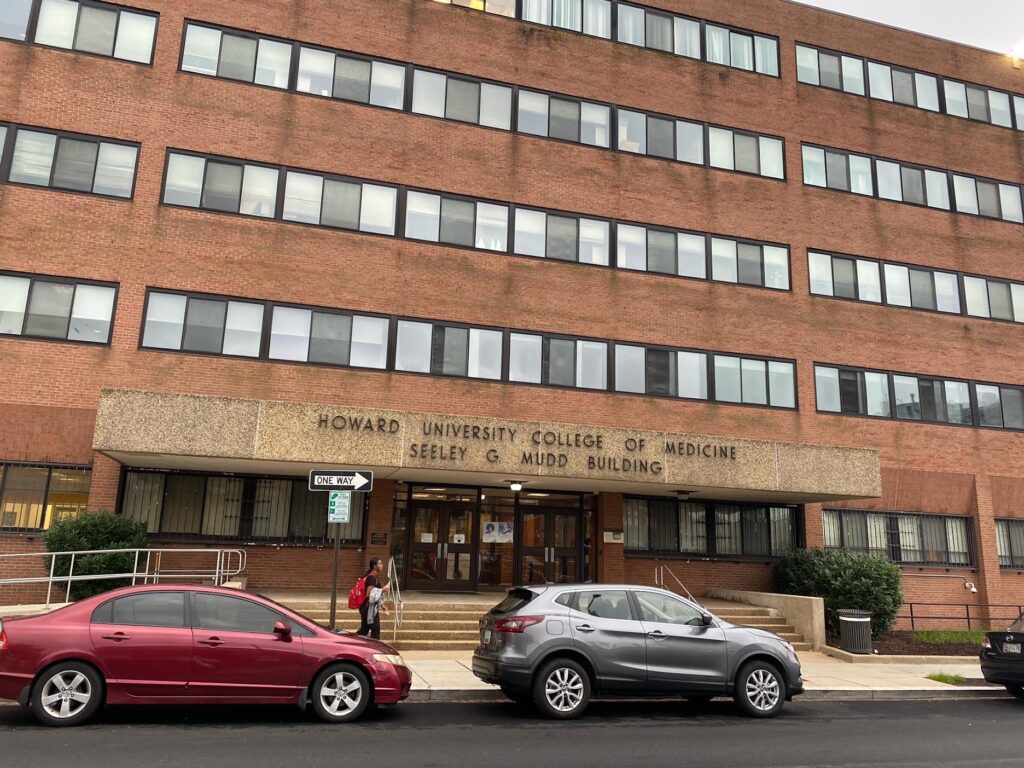
The Howard University community was alerted of an evacuation order of the Seeley Mudd Building via email on Friday Aug. 12 at 12:52 p.m. The evacuation order was issued after a report of an “unidentified electronic device” was made to police, according to a statement shared by a University spokesperson.
According to Director of Operations, Strategy and Communications Jarrett Carter, a report of a blinking device located in the Seeley Mudd Building was made to the Metropolitan Police Department (MPD) by an anonymous caller who is neither a student nor an employee of the university.
MPD relayed the report’s information to the Howard University Department of Public Safety (DPS), and the two departments coordinated a search of the building “using human, animal, and mechanical explosive finding resources,” the statement said.
“There was no device found,” Carter said, which means that the anonymous caller made a fabricated report of a blinking device.
The Hilltop was not provided with information that would further identify the caller upon requests to speak with DPS representatives who were familiar with the situation.
An email was sent out to the community that Friday at 1:45 p.m. issuing an “All Clear.”
The Seeley Mudd Building is on W St. NW and sits diagonally across the street from the Health Sciences Building on the south side of campus. The building houses a medical library, medical records and research as well as labs, medical equipment and both classroom and lecture spaces.
Chandler Robinson, 19, is a sophomore psychology major who was alerted of the evacuation order first from her psychology majors group chat, then from her email and finally from a BisonSafe notification.
Though she was not on campus at the time of the alerts, she said, “My initial reaction was concern for my friends who are in the area… who are on campus and stay relatively close to the Mudd Building. But on top of that it kind of put me on edge a little bit for the rest of the school year because normally we get shelter in place notifications rather than actual evacuation notices so I was under the assumption that it was a more serious threat…”
Carter explained how, when there is a report made by someone that would include detailed information such as descriptions of a blinking device, issuing an evacuation order is how DPS is likely to respond.
Caleb Brantley, 19, is a sophomore political science major who was alerted of the evacuation order from multiple sources.
“It happened all at once. I found out first through email, and then I got it on the BisonSafe app and then group chats I’m a part of…” Brantley said. “Once I found out that it was at the medical building, I assumed that it was a certain accident that had happened, but considering that it was a police order and not an order from the EPA (Environmental Protection Agency) or the CSB (Chemical Safety Hazard Investigation Board), I knew that something was wrong…”
In light of the evacuation order, Brantley has been thinking about his and others’ safety during this school year.
“The thought of my safety being in jeopardy does ring in the back of my head,” he said. “But we have trusted people, trusted administrators, trusted officers who can help us navigate…”
To this end, DPS notifies students, faculty and staff of “scenario training” during a given school year via email, according to Carter.
“We had a virtual meeting in the spring, and I think we had an excess of 180 participants where we had the FBI, and we reviewed active threat scenarios, and the difference between lockdown and a shelter in place and how to get updates from us on BisonSafe via text, via email,” Carter said. “That’s in addition to the trainings we have in the residence halls, that’s in addition to the work that we do with faculty and staff who work in different buildings around campus, that’s in addition to the in-person training that we do in places like College Hall North and South.”
DPS also facilitated a fair on Aug. 18 where members of the DPS team taught community members the best safety practices and gave advice on how to protect themselves.
Within the past year, Howard has experienced six instances of bomb scares, including five last school year with three upon students’ return from winter break on Jan. 31 and Feb.1, according to CNN and The Hilltop reports, respectively. Those instances were different than this recent instance in that someone had actively contacted the university to make a bomb threat as opposed to someone reporting to have seen a suspicous device.
More than a third of HBCU schools have been targeted with bomb threats in 2022 according to a Politico article published on Aug. 12. The article explains how there have been zero arrests made six months after the threats were made.
Copy edited by Chanice McClover-Lee

